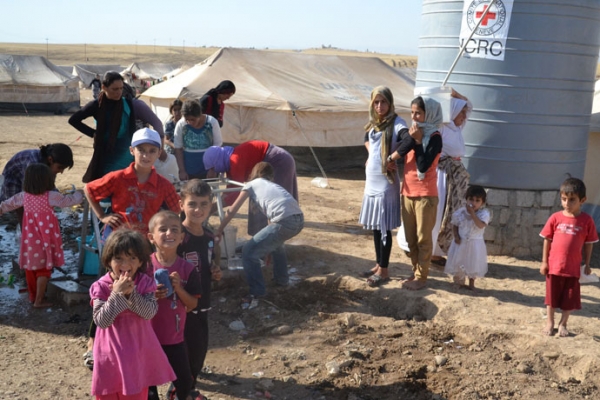In the report Urban Services During Protracted Armed Conflict, the direct, indirect, and cumulative effects caused by the disruption of essential services in urban areas are discussed and analyzed. The International Committee of the Red Cross (ICRC) emphasizes the necessity to create a paradigm that protects essential services in urban communities to limit the consequences that threaten the interconnectivity and civilian dependence in these areas. Their research has been conducted through focus groups, individual interviews, and in-depth studies of Iraq and Gaza over the past 30 years.
When a country faces armed conflict, damage in urban areas can produce the most detrimental outcomes, due to the interconnectivity and dependence of services within cities. The ICRC stresses the importance of prioritizing the protection of urban services to help prevent the reverberating effects that will affect the rest of the country. Although the International Humanitarian Law (IHL) offers a degree of protection from armed conflict against civilians, it neglects to defend against indirect effects. For example, people (entrepreneurs, service provider staff, and private-sector contractors), hardware (urban infrastructure, equipment, large machinery), and consumables (medicine, chlorine, fuel) of any essential service are protected by the IHL. The IHL protects these three crucial components by prohibiting attacks that possess the ability to cause civilian injury, damage to civilian objects, or excessive loss of civilian life. The IHL also requires the attackers to take all possible precautions to minimize these repercussions. Although civilians are protected to a certain extent, measures to protect against the indirect consequences are not being put in place. The prevention of indirect consequences is crucial because the outcome can lead to the inability of municipal or humanitarian agency staff members to perform their required job tasks due to unsafe working conditions. This will prevent civilians from receiving essential services and hinder their safety and chance of survival. If the direct and indirect consequences are not properly accounted for and effectively resolved, the cumulative outcome can lead to a much larger and more costly issue that is not as easily rectified.
ICRC calls for the creation of a new paradigm that reforms the self-rehabilitation-development cycle and clarifies the procedures needed to be taken to ensure the safety of civilians during armed conflict. Other important solutions called for providing better public health and safety of civilians include strengthening the relationship between humanitarian agencies and the community, developing necessary solutions in a timely manner, funding productive solutions based on reliable research that accounts for the duration and scale of the challenges at hand, and improving compliance with the IHL. It is crucial to place funding into cost-effective methods that account for the scale and duration of the challenges presented so civilians can be properly aided and protected by humanitarian agencies. Along with these solutions, comprehensive preventive measures and proactive planning must be carried out by the IHL and other humanitarian agencies to ensure minimal indirect and cumulative damage in countries affected by armed conflict.
These measures help to break the cycle of cumulative damage in countries impacted by armed conflict and warrant the protection of the civilians.
To know more, please read:







